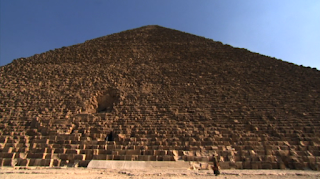 |
| The Queen And I - 2008 |
Iranian filmmaker Nahid Persson Sarvetani opens the film by discussing her growing up years in Iran. She contrasts her relatively poverty stricken childhood with the seemingly overwhelming opulence enjoyed by the Imperial Family, particularly the Empress.
Nahid admits to being a revolutionary, one who actively participated in the events which led to the ouster of the Shah and his regime. Wanting the change promised by the new regime, she had no idea what was about to unfold in Iran. Her family life was utterly destroyed and she had to flee into exile, eventually settling in Sweden.
She meets Farah Pahlavi at her Paris home, and the two share polite pleasantries.
Right away, Nahid is out of her element when addressing a queen, and is a little bit put off by Farah's reply to her question of how to address her.
Trying to overcome her reservations, Nahid spends time with Farah and asks her about life during the Iranian Revolution from her perspective.
A planned visit to the grave of Farah's daughter Leila is unexpectedly cancelled. Nahid discovers that Farah has found out about her revolutionary past and has decided not to participate in the filming.
Nahid goes to Farah and explains her position and a little bit more about her background. Farah listens with an empathetic ear. After hearing Nahid's story, Farah agrees to continue with the film.
Nahid asks Farah if she ever goes out in public in casual clothes. Farah says that she doesn't. She's got to keep up appearances, and people don't expect her to look "untidy".
Farah talks about meeting the Shah for the first time and her initial interactions with members of the royal family. She also talks about her early days as a queen.
Nahid is surprised to see that Farah still keeps up with her Iranian compatriots, maintaining a correspondence with some of them, and trying to do good where she thinks it will help.
She's also very glad to receive some Iranian soil that someone sent her from one of her former palaces. The joy on her face is contagious.
Farah eventually does take Nahid to Princess Leila's grave. She tells of being on the phone with the doctor trying to find out if her daughter was alive or dead. Nahid is visibly moved by Farah's story.
On a trip with Farah to Cairo, Nahid finds once again that the documentary has been put on hold. Farah has heard of some critical remarks about herself and the Shah that Nahid gave in an interview and is withholding her cooperation. In a palace lent to her by the Egyptian government, Farah views what Nahid has filmed so far. Farah is charmed by what she sees and agrees to continue.
Farah takes Nahid to the Shah's final resting place. Nahid watches as Farah communes with the Shah in private.
They also make time to visit the famed pyramids. Farah and Nahid climb the pyramids and gaze out over the city of Cairo, remarking on its similarity to Tehran.
Nahid is even asked to Farah's home in Washington D.C. There, Nahid is able to ask Farah some sensitive questions about her husband's rule. Farah answers honestly and gracefully.
Nahid even gets to meet Farah's son, daughter-in-law, and granddaughters at a benefit for the Iranian Children's Foundation.
At the end of the film, Farah tells Nahid that it's time to let the past go and build a better future for Iran, the country they both love.
Nahid ends the film with a different attitude from when she began. Initially against Farah and what she stands for, she is now a self-proclaimed "Farah follower" but definitely not a royalist. "When I started this film, I was intrigued by a woman whose life couldn’t have been more different than mine. In the end, Farah is no longer the fairy tale queen of my childhood fantasy nor the mysterious antagonist of my revolutionary past. We have become two unlikely friends who share a profound longing for the Iran we both love and dream the same dream to touch its soil again," she says eloquently.
And that's it for The Queen And I. This film was never released on the big screen in America. It received a theatrical release in Sweden and in France, hence it's inclusion on this blog. The film was, however, released at the Sundance Film Festival (so technically silver screen). It's definitely a good, human look at Farah Pahlavi. A more recent documentary with Farah's cooperation was released entitled, "Farah Diba Pahlavi: The Last Princess".
As always, if you wish to leave a comment, please remember our posting rules.










































No comments:
Post a Comment